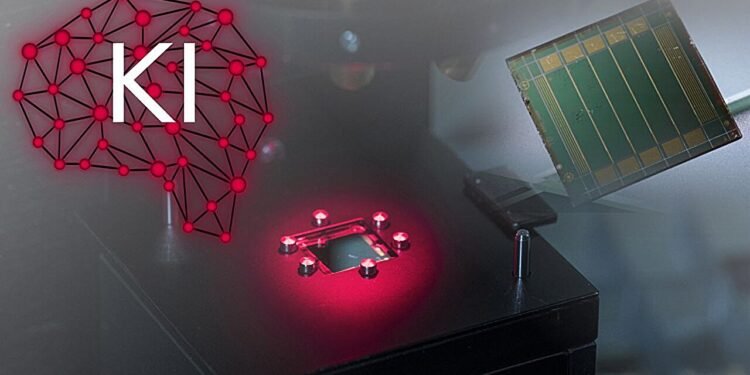
In the lab, perovskite solar cells show high efficiency in converting solar energy into electricity. In combination with silicon solar cells, they could play a role in the next generation of photovoltaic systems. Now researchers at KIT have demonstrated that machine learning is a crucial tool for improving the data analysis needed for commercial fabrication of perovskite solar cells. They present their results in Energy & Environmental Science.
Photovoltaics is a key technology in efforts to decarbonize the energy supply. Solar cells using perovskite semiconductor layers already boast very high efficiency levels. They can be produced economically in thin and flexible designs.
“Perovskite photovoltaics is at the threshold of commercialization but still faces challenges in long-term stability and scaling to large surface areas,” said Professor Ulrich Wilhelm Paetzold, a physicist who conducts research at the Institute of Microstructure Technology and the Light Technology Institute (LTI) at KIT. “Our research shows that machine learning is crucial to improving the monitoring of perovskite thin-film formation that’s needed for industrial production.”
With deep learning (a machine learning method that uses neural networks), the KIT researchers were able to make quick and precise predictions of solar cell material characteristics and efficiency levels at scales exceeding those in the lab.
A step toward industrial viability
“With measurement data recorded during production, we can use machine learning to identify process errors before the solar cells are finished. We don’t need any other examination methods,” said Felix Laufer, an LTI researcher and lead author of the paper. “This method’s speed and effectiveness are a major improvement for data analysis, making it possible to solve problems that would otherwise be very difficult to deal with.”
By analyzing a novel dataset documenting the formation of perovskite thin films, the researchers leveraged deep learning to identify correlations between process data and target variables such as power conversion efficiency.
“Perovskite photovoltaics has the potential to revolutionize the photovoltaics market,” said Paetzold, who heads the LTI’s Next Generation Photovoltaics department. “We show how process fluctuations can be quantitatively analyzed with characterization methods enhanced by machine learning techniques to ensure high material quality and film layer homogeneity across large areas and batch sizes. This is a crucial step toward industrial viability.”
More information:
Felix Laufer et al, Deep learning for augmented process monitoring of scalable perovskite thin-film fabrication, Energy & Environmental Science (2025). DOI: 10.1039/D4EE03445G
Karlsruhe Institute of Technology
Citation:
Machine learning precisely predicts material characteristics for high-performance photovoltaics (2025, March 10)
retrieved 10 March 2025
from https://techxplore.com/news/2025-03-machine-precisely-material-characteristics-high.html
This document is subject to copyright. Apart from any fair dealing for the purpose of private study or research, no
part may be reproduced without the written permission. The content is provided for information purposes only.










